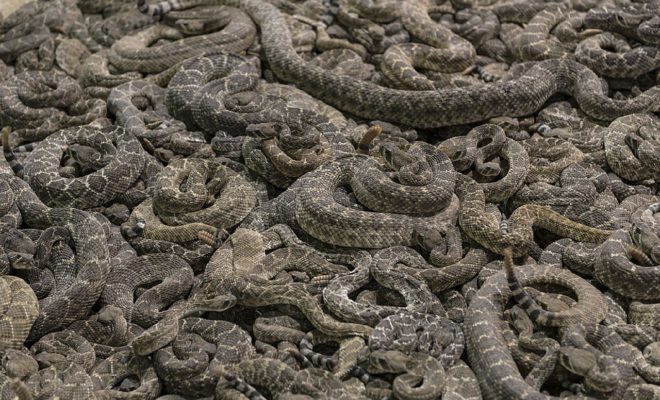 Rattlesnakes freak out many Montanans. The thought of being bitten by a Rattler is not a pleasant thought. If you dislike Rattlers, here are some wildlife partners that you may prefer. These noisy serpents are generally dangerous but are not at the top of the food chain.
Rattlesnakes freak out many Montanans. The thought of being bitten by a Rattler is not a pleasant thought. If you dislike Rattlers, here are some wildlife partners that you may prefer. These noisy serpents are generally dangerous but are not at the top of the food chain.
Rattlers bite humans as a last resort. They prefer to save their venom for food that they can eat. Rattlers are also on the menus of other predators. Rattler predators have teeth, talons, beaks, and claws that can overmatch poisonous fangs.
Despite having great camouflage, Rattlers can be seen by predators with great eyesight. They also give off an odor that can be identified by other hungry critters. The first option for a Rattler is to avoid a battle and try to escape. This is when a predator can strike and avoid the head and fangs.
The Great Horned Owl will routinely feed on Rattlesnakes. The owls are deadly silent, when they fly, and their talons are tough and pretty much bite proof. This is also true of Eagles and Red-Tailed hawks. Strong talons and beaks quickly break the snakes’ heads and necks.
Smaller Rattlesnakes are more likely to get eaten by predators. The bigger predators eat the smaller. Opportunistic predators must eat too. Bull snakes feast on Rattlesnakes by eating them headfirst. Wild Turkeys also eat Rattlesnakes that may be near their nests or young.
Coyotes and wolves have no fear of Rattlesnakes. They quickly grab and shake the snakes. Sometimes they hold down the snakes with their feet and break their necks before a snake feast.
Rattlesnake predators are not immune to Rattlesnake venom. A combination of scaley legs, thick feathers, or fur are hard for fangs to penetrate. Not all dinners end with the Rattler losing a fight.
My Mom hated anything that looked like a snake. She wouldn’t eat pike or pickerel because they looked like snakes. Other folks feast on Rattlesnakes during Rattlesnake Round ups. They claim that Rattlers taste like “rubber chicken”. Thousands of Rattlesnakes are dispatched during these roundups. Heads, skins, and rattlers are made into unique souvenirs. The rest are eaten.
Professional snake hunters can clear your property of Rattlers to protect livestock, pets, and people.
Rattlesnakes are also Native Montanans. They do eat pesky rodents, insects, and varmints that are also a nuisance. Fortunately, most Rattlesnakes alert you to their presence. Some Rattlers have no rattles. A Rattler that is shedding is also aggressive and does not want to be disturbed. Know where the snakes are and try to avoid a snake conflict.
Shake, Rattle, and watch out!
Montana Grant
